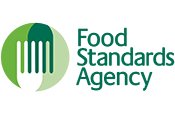Food packaging
Phthalates in food packaging
Phthalates belong to a group of chemicals called 'phthalic acid diesters'. These are found in many household items and in some food packaging. It is especially common in packaging that contains polyvinyl chloride (PVC).
Facts about phthalates in food
Phthalates take a long time to break down in the environment, so they are sometimes found at low levels in some foods.
Research has shown that phthalates can affect the liver in animals. The level of phthalates that is consumed in food is not thought to be a risk for humans.
There has been some concern that phthalates may be harmful to humans because they are 'endocrine disrupters'. These are substances that may be able to interact with human hormone systems.
There is evidence that some wildlife species are affected by endocrine disrupters. However, there's no conclusive evidence that exposure to these chemicals has a harmful effect on humans.
Monitoring the potential toxic effects of phthalates in food
The Food Standards Agency (FSA) is aware of public concern about the effects of phthalates. It commissions chemical safety research and surveys of substances in food contact materials that might be harmful to human health.
Find FSA's chemical hazards in food and feed research.
Safe limits for phthalates in food
The European Food Safety Authority (EFSA) sets limits for the safe use of phthalates in food contact materials.
The EFSA reviews all the scientific evidence to set a 'tolerable daily intake' (TDI). This is the amount of phthalates in food or drinking water that people can safely consume without harm.
The European Commission has set a legal limit for the amount of phthalates that can migrate into food. Under current operating arrangements for Northern Ireland, businesses seeking a new authorisation for placing these materials on the NI market will continue to follow EU food rules. From Autumn 2023, the Windsor Framework will allow GB public health standards to apply for pre-packed retail goods moved via a new NI retail movement scheme and placed on the NI market. Therefore, goods moving via this route containing GB authorised materials will be able to be placed on the NI market.
- Food Standards Agency Northern Ireland028 9041 7700
